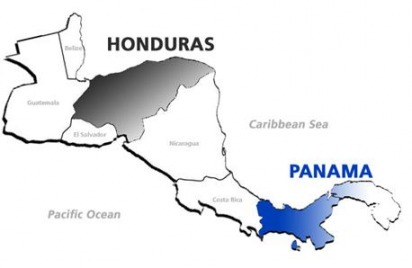Why Panama?
Development Challenges

Typical Family Income is less than $2 per day
Average level of education is approximately 5th grade
Remote areas have limited legal awareness
Fighting systemic corruption
Disparity and Needs:
Financial incentives attract foreign investment in Panama. Unfortunately,the locals are often left out. Therefore the income gap is widening: whilePanama City is currently building 200 new skyscrapers, the rural areasremain impoverished and underdeveloped•Highest inequality level, 5% of population share 60% of income• Average per capita income: US$4,400• Population living below US$1.50 a day: 16.6%• Poverty in rural areas: 60%• Poverty among indigenous communities (nearly 10% of Panama´s3.5 million people): 98%
Resources and Roles:
Excellent networking resources with Ciudad del Saber (City of Knowledge). “The City of Knowledge is an international complex for education, research, and innovation. It has been developed to promote and facilitate synergy between universities, scientific research centers, businesses, and international organizations. The City of Knowledge is governed by a private, non-profit organization, The City of Knowledge Foundation, which was created in 1995.”Accessibility, Infrastructure, and Safety:Many of the disadvantaged communities in Panama are easily accessibly with less than one day travel time National infrastructure is conducive to Global Brigade´s projects, and is one of the safest locations in the Latin American region for this type of work.
Global Law Brigades at UCI hope to educate the communities of their modernizing judicial system and foster the rule of law and equitable access to justice consolidating its democracy
Maintaining the smooth administration of the economically vital Panama Canal and conserving the watershed that feeds it
Fostering the enabling environment necessary to increase trade and rural competitiveness while redressing widespread income inequality.
Average level of education is approximately 5th grade
Remote areas have limited legal awareness
Fighting systemic corruption
Disparity and Needs:
Financial incentives attract foreign investment in Panama. Unfortunately,the locals are often left out. Therefore the income gap is widening: whilePanama City is currently building 200 new skyscrapers, the rural areasremain impoverished and underdeveloped•Highest inequality level, 5% of population share 60% of income• Average per capita income: US$4,400• Population living below US$1.50 a day: 16.6%• Poverty in rural areas: 60%• Poverty among indigenous communities (nearly 10% of Panama´s3.5 million people): 98%
Resources and Roles:
Excellent networking resources with Ciudad del Saber (City of Knowledge). “The City of Knowledge is an international complex for education, research, and innovation. It has been developed to promote and facilitate synergy between universities, scientific research centers, businesses, and international organizations. The City of Knowledge is governed by a private, non-profit organization, The City of Knowledge Foundation, which was created in 1995.”Accessibility, Infrastructure, and Safety:Many of the disadvantaged communities in Panama are easily accessibly with less than one day travel time National infrastructure is conducive to Global Brigade´s projects, and is one of the safest locations in the Latin American region for this type of work.
Global Law Brigades at UCI hope to educate the communities of their modernizing judicial system and foster the rule of law and equitable access to justice consolidating its democracy
Maintaining the smooth administration of the economically vital Panama Canal and conserving the watershed that feeds it
Fostering the enabling environment necessary to increase trade and rural competitiveness while redressing widespread income inequality.
